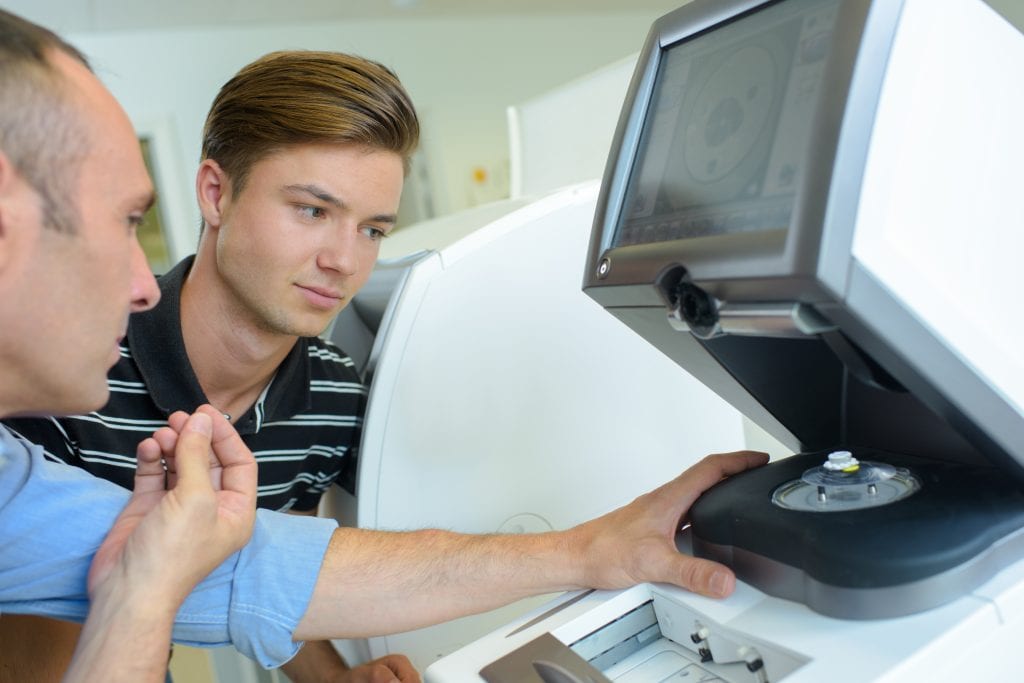Manufacturing

Theme Leaders:
Prof. Gavin Walker
University of Limerick
Dr Steven Ferguson
University College Dublin
Manufacturing platform projects:
Project 4A: Hybrid Processing and Automated Process Design. Project 4B: Continuous and Miniaturised Manufacturing. Project 4C: Advanced Manufacturing Techniques.
Overall Objective:
Enabling a disruptive change in the manufacture of drug substances and drug products, through the development and implementation of continuous manufacturing, flow chemistry and end-to-end manufacturing methodologies (“Pharmaceuticals 4.0”).

Key Scientific Expertise:
Process Engineering, Bioprocess Engineering, Process Analytics, Continuous Processing, Polymer chemistry, Biochemistry, Customised technology; additive manufacturing.
Industrial Significance:
The manufacturing theme will be aligned to industry needs and follow a predictive design-led approach in the development of next generation pharmaceutical products and processes. It is widely recognised that within the next decade there will be a disruptive change in how we manufacture drug substance (DS) and drug product (DP) at End-to-End levels. This will align to an Industry 4.0 approach in manufacturing and ultimately to a “Pharmaceuticals 4.0” approach by 2025. To establish itself at the forefront of such developments, SSPC will expand its existing expertise in the development and implementation of Continuous Manufacturing (CM) techniques, Flow Chemistry and End-to-End manufacturing methodologies from DS to DP. Manufacturing (DS, DP and coupled DS-DP) in the future is likely to be ‘skid mounted’, agile and mobile. This requires manufacturing research to be truly multi-disciplinary, leading to innovation at the interfaces between chemistry, process engineering, data analytics and mathematical modelling. CM in particular offers low facility cost, flexible batch (supply chain flexibility), platform tech, better QA (not better quality), yield improvements, and decreased Technology Transfer effort. In terms of implementation of CM, regulatory input from MHRA and EMA indicate that there is no difference in inspecting CM vs Batch, although there is a need to demonstrate control. Batch inspection is already defined in ICH Q7, with PAT and RTR well established (QbD). Recent developments in regulatory aspects include, process flexibility, which is supported by ICH Q8/9/10 allowing different control strategies and to ICH Q12 harmonization. Also, SSPC-PharM5 will assist in enabling new strategies and promote innovation and continual improvement, strengthen QA and reliable supply of product, including proactive planning of supply chain adjustments. This will allow regulators (assessors and inspectors) to better understand firms’ Pharmaceutical Quality Systems for management of post-approval CMC changes.
Industry 4.0 will require manufacturing systems that have full feedback control and self-correcting processes. This requires Theme 4 to advance Process Modelling and PAT for model predictive control of pharmaceutical manufacturing. It is also predicted that as industry moves to increased localisation, with the requirement to perform manufacturing in countries to achieve regulatory approval, this will drive different manufacturing modes for efficiencies in small volume manufacture in developing countries. This requires Theme 4 to also focus on intensified manufacturing, modularisation and process control systems.
